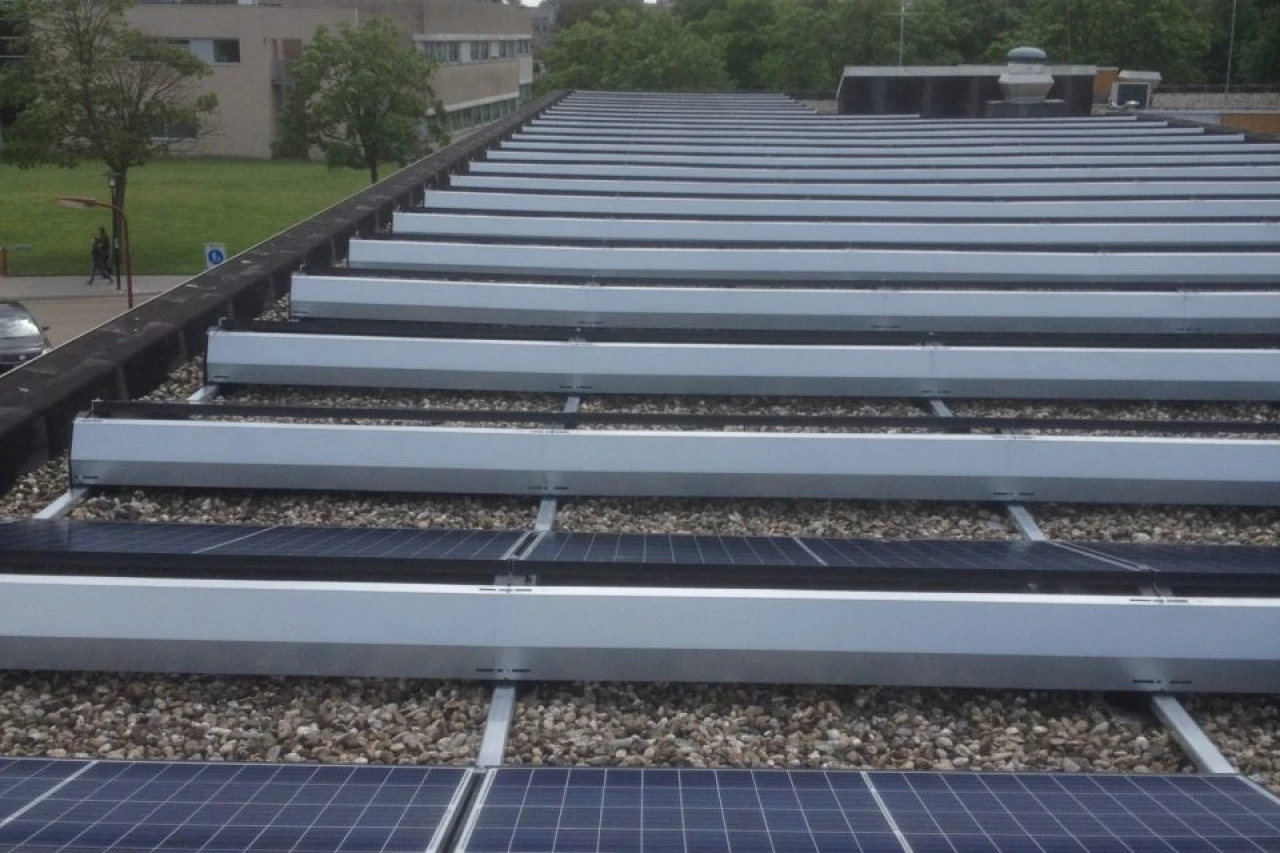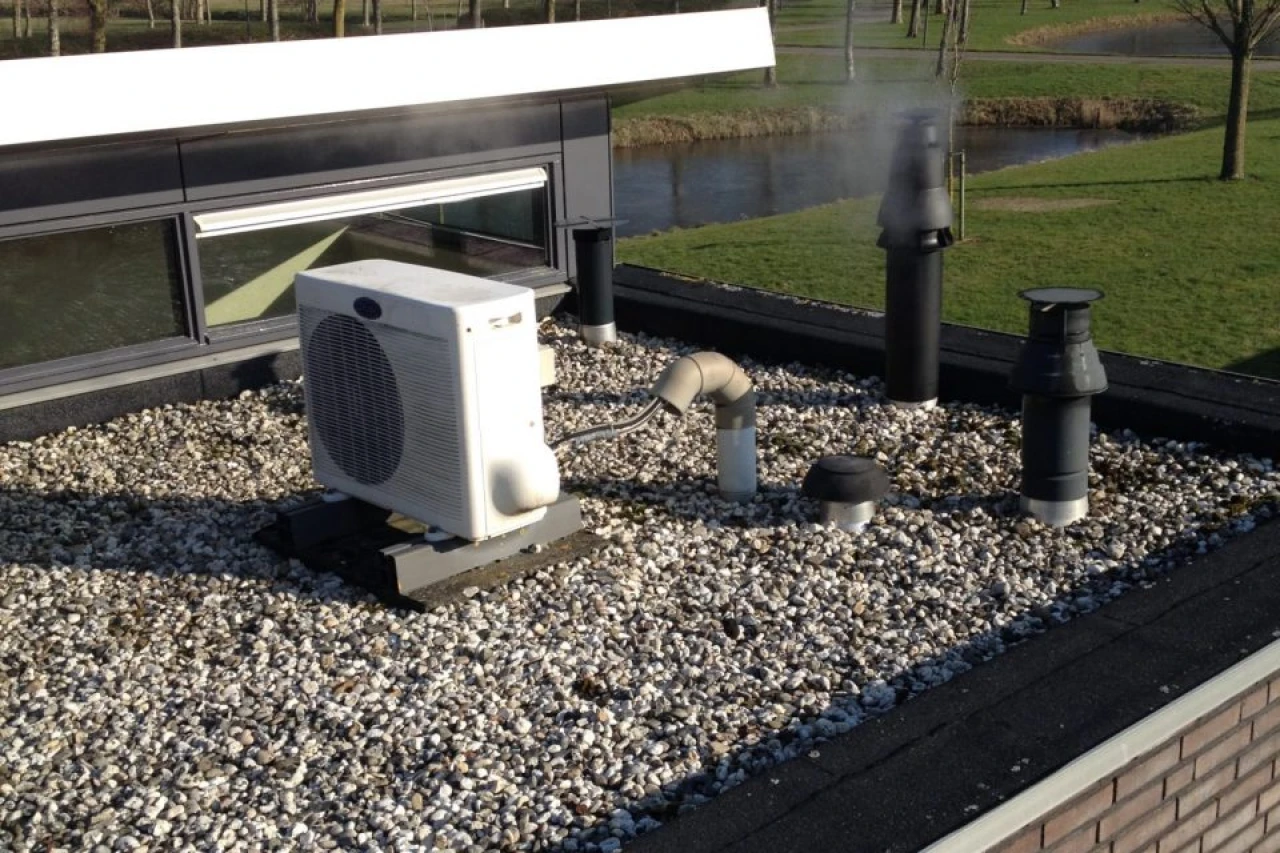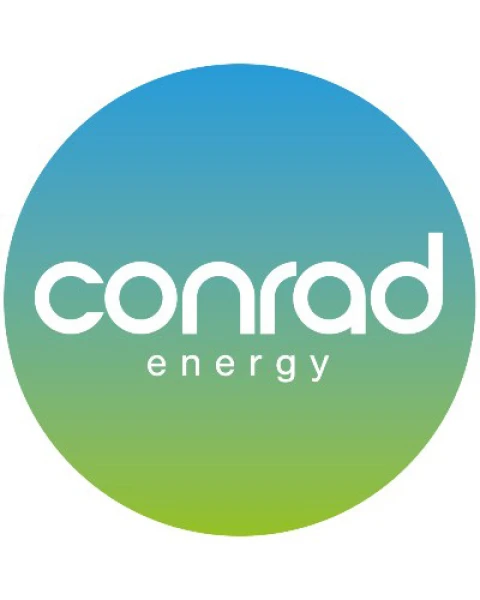

- Knowledge Base
- Blog
- Safe maintenance on roofs requires careful planning
Safe maintenance on roofs requires careful planning
The time that a roof only offers protection from the elements is far behind us. The roof as we know it has been transformed into a multi-functional space incorporating air-conditioning units, gardens, solar panels and marshes. All these forms of roof installation require maintenance to be carried out in a safe and efficient way.
A good start is half the work. A proverb that applies to many situations. This certainly applies to roofs with safety and health risks. By identifying where, when and how to carry out maintenance beforehand, risks come to light.
Safe Energy
Often, solar energy companies design the installation to provide the maximum return for the client by placing as many PV panels on the roof area as possible. Whilst this is logical financially, often it presents issues with regards to carrying out general routine maintenance to the system. PV arrays need to be kept clean to maximise their efficiency, the frequency of this requirement depends on many factors such as the pitch of the roof and location of the installation. If a safe method of access is not provided at the design stage, this routine task could become a costly burden for the customer.
If the 'laying plan' and the access and maintenance plan are coordinated at an early stage, then the client will still benefit from an optimal return whilst keeping maintenance costs to a minimum.

Safe fresh air
Air conditioning and air handling units are often installed on roof areas, ideally in a designated plant enclosure with safe access and protection from fall hazards. Many however, are installed in a position that do not allow maintenance to be carried out safely without further temporary protection.
Where a designated plant enclosure is not available, such as installations on existing buildings, at the very least, air conditioning units and other items of plant should be installed in a 'safe zone' away from the roof edge. Additional recommended measures would be to provide a non-slip walkway surface and a safe zone denoted by a freestanding D-Marc or guardrail system

Biodiverse roofs with ecological and aesthetically safe safety
Green & Brown roofs have different functions. They provide water storage, a beautiful view, biodiversity, extra insulation and CO2 reduction. In order to continue to reap the benefits of this, regular maintenance is required. In a safe way, without disturbing the functioning of the overgrown roof.
Temporary facilities such as deadweight anchor points are less suitable for vegetated roofs because they compress the vegetation and sub-structure. Special anchor points for multifunctional roofs have been developed for this purpose. The traditional steel support post and the Constant Force Post® from MSA Latchways, for example, does not detract from the operation and appearance of the roof and makes safe maintenance possible.













